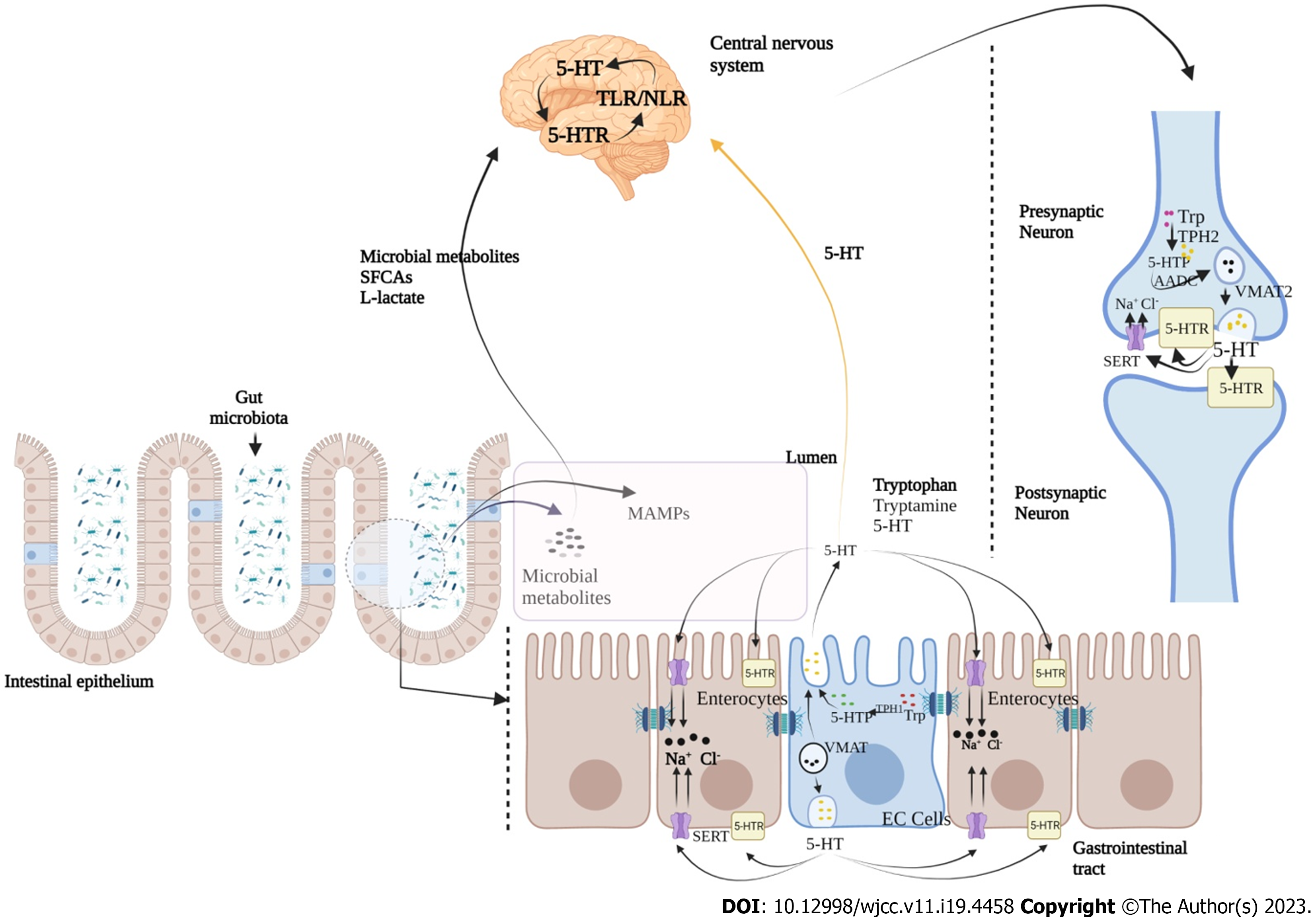Copyright
©The Author(s) 2023.
World J Clin Cases. Jul 6, 2023; 11(19): 4458-4476
Published online Jul 6, 2023. doi: 10.12998/wjcc.v11.i19.4458
Published online Jul 6, 2023. doi: 10.12998/wjcc.v11.i19.4458
Figure 2 Serotonin mediated bidirectional cross talk between gut microbiota and brain.
Serotonin (5-HT) plays a key role in microbiota-gut-brain communications to modulate gastrointestinal (GI) and central nervous system (CNS) functions. Serotonin action is mediated through various signalling mechanisms between 5-HT receptors located in postsynaptic and presynaptic neurons at CNS and intestinal serotonergic neurons, and in different cell types of GI tract. Serotonin is synthesized by enterochromaffin cells (EC) in the gut and serotonergic neurons in the CNS. Microbial associated molecular patterns from microbiota directly affect the serotonergic system, mainly through modulating the activity and expression of serotonin transporter (SERT) and serotonin receptors (5-HTRs), as well as the synthesis of 5-HT in GI tract. Stored into vesicles forms through the vesicular monoamine transporter (VMAT; VMAT1 in EC cells and VMAT2 in neurons), 5-HT is further released into the extracellular space where its binds to different serotonin receptors (5-HTR). At the same place taken up by the neurons, enterocytes or platelets through the SERT limit the 5-HT mediated signalling crosstalk. 5-HT: 5-Hydroxytryptamine; TLR: Toll-like receptors; NLR: NOD-like receptors; SFCA: Short-chain fatty acids; MAMP: Molecular patterns from microbiota; SERT: Serotonin transporter; VMAT: Vesicular monoamine transporter.
- Citation: Singh SV, Ganguly R, Jaiswal K, Yadav AK, Kumar R, Pandey AK. Molecular signalling during cross talk between gut brain axis regulation and progression of irritable bowel syndrome: A comprehensive review. World J Clin Cases 2023; 11(19): 4458-4476
- URL: https://www.wjgnet.com/2307-8960/full/v11/i19/4458.htm
- DOI: https://dx.doi.org/10.12998/wjcc.v11.i19.4458









